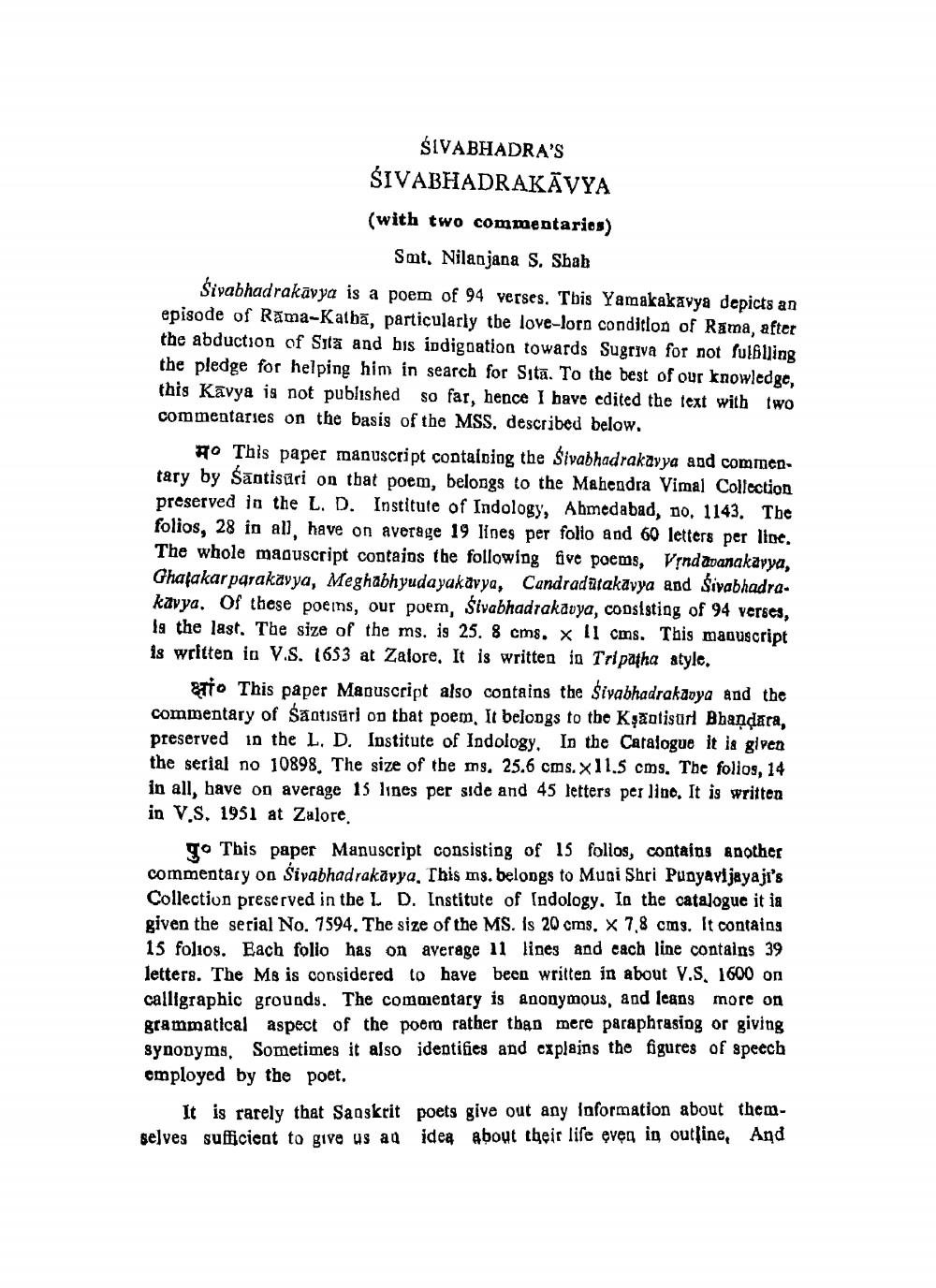________________
SIVABHADRA'S ŚIVABHADRAKĀVYA (with two commentarios)
Smt. Nilanjana S. Shah Sivabhadrakāvya is a poem of 94 verses. Tbis Yamakakavya depicts an episode of Rāma-Katba, particularly the love-lorn condition of Rama, after the abduction of Sita and his indigoation towards Sugriva for not fulblling the pledge for helping him in search for Sita. To the best of our knowledge, this Kavya is not published so far, hence I have edited the text with two commentaries on the basis of the MSS, described below.
# This paper manuscript containing the Sivabhadrakavya and commen. tary by Sāotisari on that poem, belongs to the Mahendra Vimal Collection preserved in the L. D. Institute of Indology, Ahmedabad, no. 1143. The folios, 28 in all, have on average 19 lines per folio and 60 letters per line. The whole manuscript contains the following five poems, Vindavanakarya, Ghafakar parakavya, Meghabhyudayakavya, Candradatakavya and Sivabhadra. kavya. Of these poems, our poem, Śivabhadrakauya, consisting of 94 verses, la the last. The size of the ms. ig 25. 8 cms. x 11 cms. This manuscript is written in V.S. 1653 at Zalore. It is written in Tripatha atyle,
To This paper Manuscript also contains the Sivabhadrakaoya and the commentary of Santisari on that poem. It belongs to the Kşantisurl Bhandara, preserved in the L. D. Institute of Indology. In the Catalogue it is given the serial no 10898. The size of the ms, 25.6 cms. x11.5 cms. The folios, 14 in all, have on average 15 lines per side and 45 letters per lino. It is written in V.S. 1951 at Zalore.
To This paper Manuscript consisting of 15 follos, contains another commentary on Sivabhadrakavya. This ms. belongs to Muai Shri Punyavijayaji's Collection preserved in the L D. Institute of Indology. In the catalogue it ia given the serial No. 1594. The size of the MS. is 20 cms. 7.8 cms. It containg 15 folios. Each folio has on average 11 lines and cach line contains 39 letters. The Me is considered to have been written in about V.S. 1600 on calligraphic grounds. The comprentary is Anonymous, and leans more on grammatical aspect of the poom rather than mere paraphrasing or giving synonyms. Sometimes it also identifies and explains the figures of speech employed by the poet,
It is rarely that Sanskrit poets give out any information about themselves sufficient to give us an idea about their life even in outline, And




